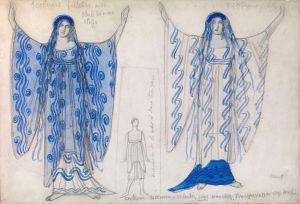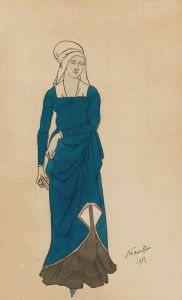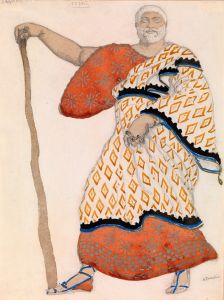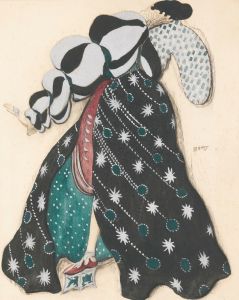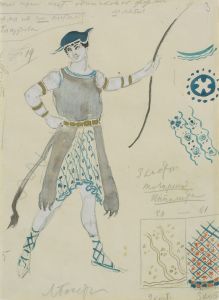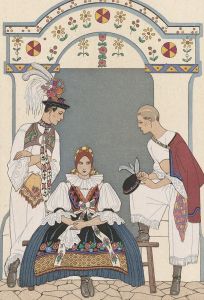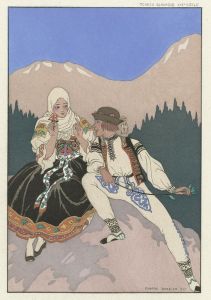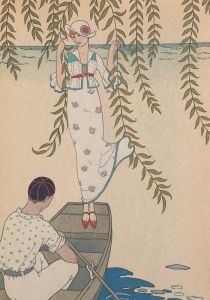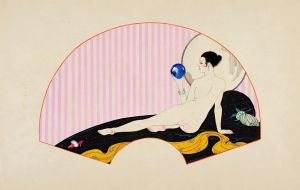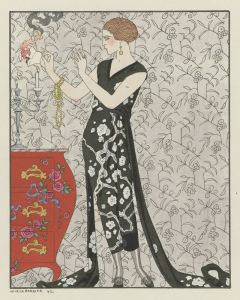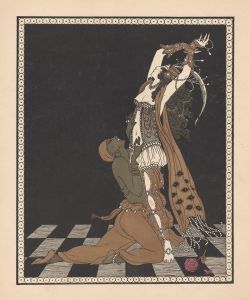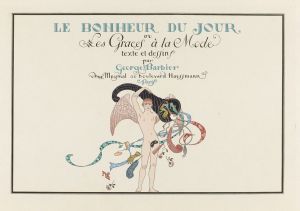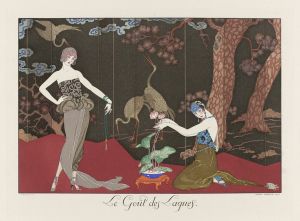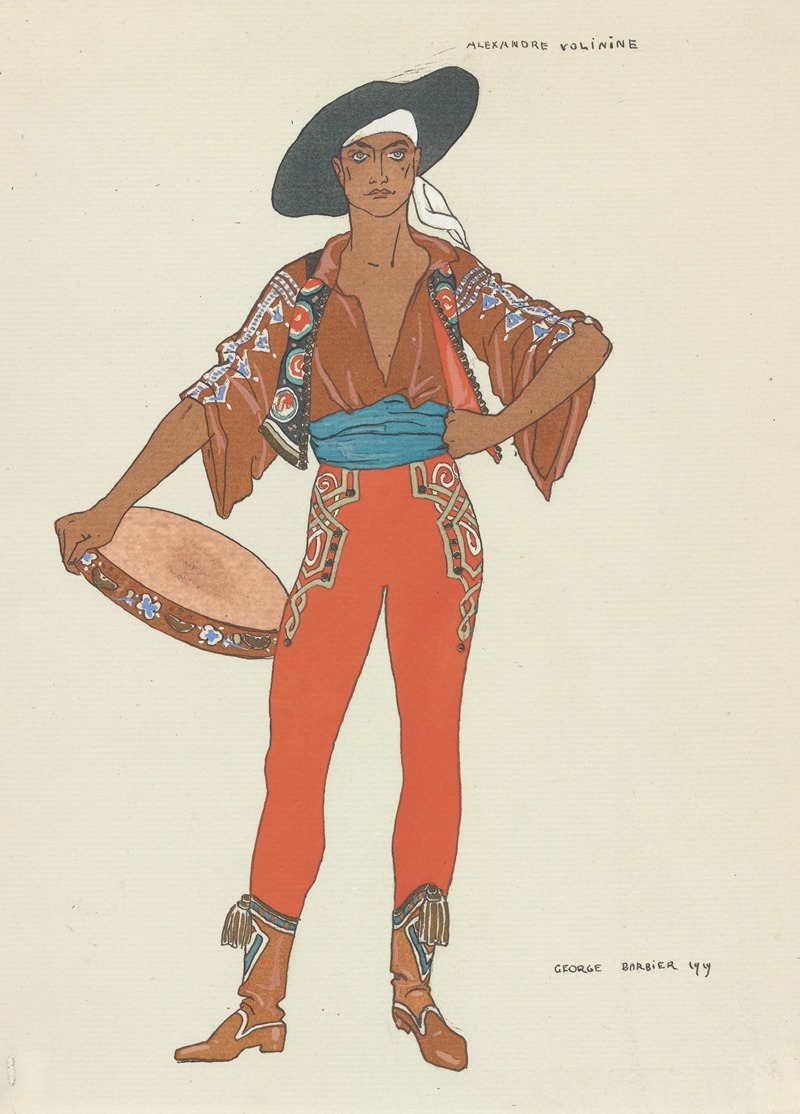
Costume design drawing for Alexandre Volinine as le Bohémien in Amarylla, Ballet de Glazounow
A hand-painted replica of George Barbier’s masterpiece Costume design drawing for Alexandre Volinine as le Bohémien in Amarylla, Ballet de Glazounow, meticulously crafted by professional artists to capture the true essence of the original. Each piece is created with museum-quality canvas and rare mineral pigments, carefully painted by experienced artists with delicate brushstrokes and rich, layered colors to perfectly recreate the texture of the original artwork. Unlike machine-printed reproductions, this hand-painted version brings the painting to life, infused with the artist’s emotions and skill in every stroke. Whether for personal collection or home decoration, it instantly elevates the artistic atmosphere of any space.
The costume design drawing for Alexandre Volinine as le Bohémien in "Amarylla," a ballet by Alexander Glazunov, is a notable work by the French illustrator and designer George Barbier. This piece is a fine example of early 20th-century costume design, reflecting the artistic and cultural trends of the period.
George Barbier, born in 1882, was a prominent figure in the world of fashion and theater design during the early 1900s. He was known for his elegant and sophisticated style, which often incorporated elements of Art Deco, a movement characterized by rich colors, bold geometric shapes, and lavish ornamentation. Barbier's work was influential in shaping the visual aesthetics of his time, and his designs were highly sought after in both the fashion and performing arts industries.
The ballet "Amarylla" was composed by Alexander Glazunov, a Russian composer who was an important figure in the late Romantic period. Glazunov's music is known for its lyrical melodies and rich orchestration, and he played a significant role in the development of Russian ballet music. "Amarylla" is one of his lesser-known works, but it exemplifies his skill in creating evocative and expressive compositions for dance.
Alexandre Volinine, the dancer for whom the costume was designed, was a celebrated ballet dancer of the early 20th century. He was known for his technical skill and expressive performances, and he was a prominent figure in the ballet world during his career. Volinine's portrayal of le Bohémien in "Amarylla" would have required a costume that allowed for both freedom of movement and visual impact, qualities that Barbier's design would have provided.
Barbier's costume design for Volinine as le Bohémien is characterized by its attention to detail and its use of color and texture to convey the character's personality and role within the ballet. The design likely included elements that reflected the bohemian theme, such as flowing fabrics, intricate patterns, and a vibrant color palette. These elements would have been carefully chosen to enhance the dancer's performance and to complement the overall aesthetic of the production.
The collaboration between Barbier, Glazunov, and Volinine is an example of the interdisciplinary nature of ballet, where music, dance, and visual art come together to create a cohesive and immersive experience for the audience. Barbier's design not only served a practical purpose in terms of costume functionality but also contributed to the storytelling and emotional impact of the ballet.
In summary, the costume design drawing for Alexandre Volinine as le Bohémien in "Amarylla" by George Barbier is a testament to the rich artistic collaboration that characterized early 20th-century ballet. It reflects the creative synergy between composer, designer, and dancer, and it remains a valuable piece of art history that illustrates the aesthetic and cultural values of its time.





